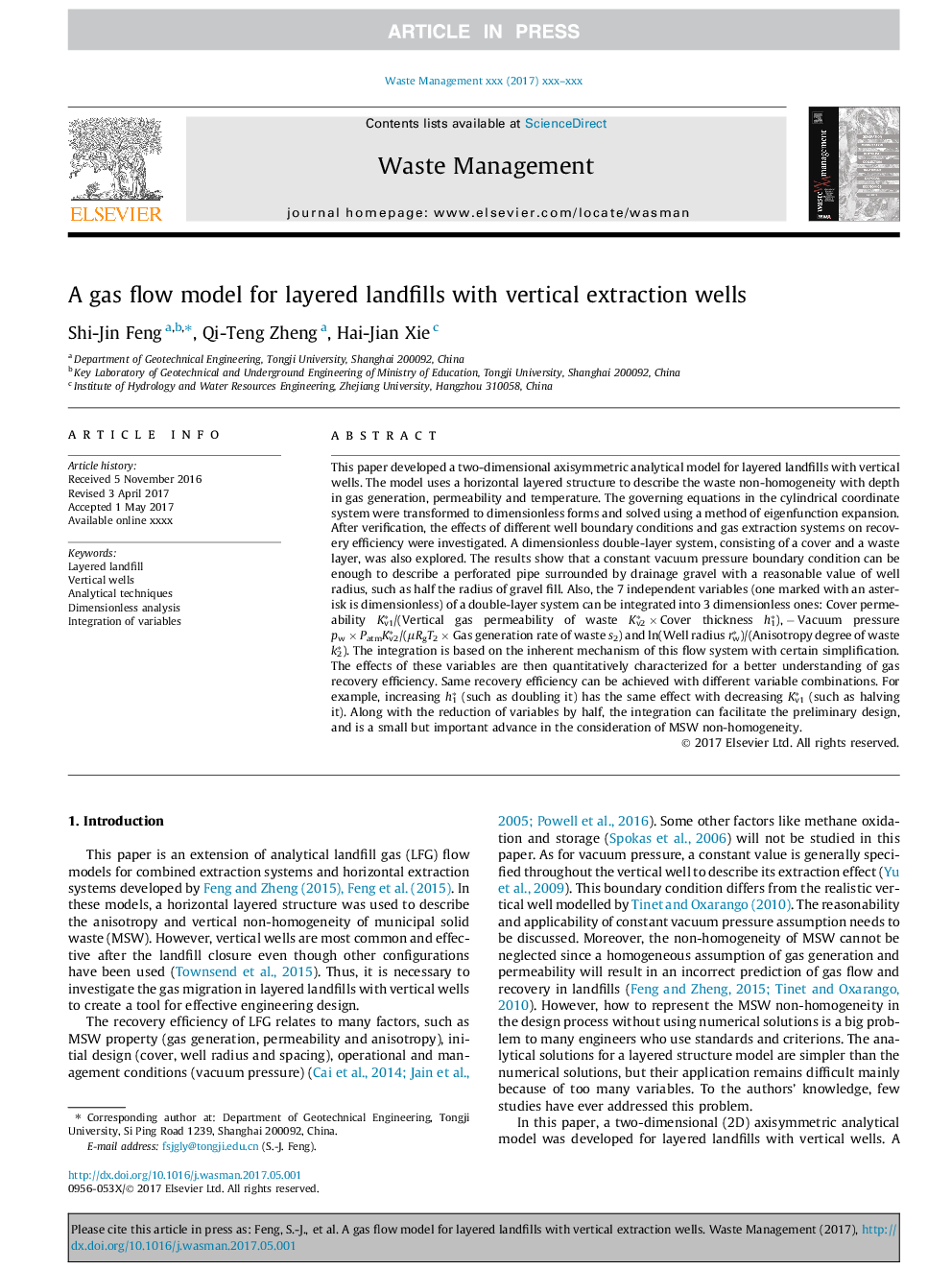ترجمه فارسی عنوان مقاله
مدل جریان گاز برای دفن زباله های لایه ای با چاه های استخراج عمودی
عنوان انگلیسی
A gas flow model for layered landfills with vertical extraction wells
| کد مقاله | سال انتشار | تعداد صفحات مقاله انگلیسی |
|---|---|---|
| 83788 | 2017 | 11 صفحه PDF |
منبع

Publisher : Elsevier - Science Direct (الزویر - ساینس دایرکت)
Journal : Waste Management, Volume 66, August 2017, Pages 103-113
ترجمه کلمات کلیدی
دفن زباله های لایه ای، چاه های عمودی، تکنیک های تحلیلی، تجزیه و تحلیل بدون ابعاد، ادغام متغیرها،
کلمات کلیدی انگلیسی
Layered landfill; Vertical wells; Analytical techniques; Dimensionless analysis; Integration of variables;

